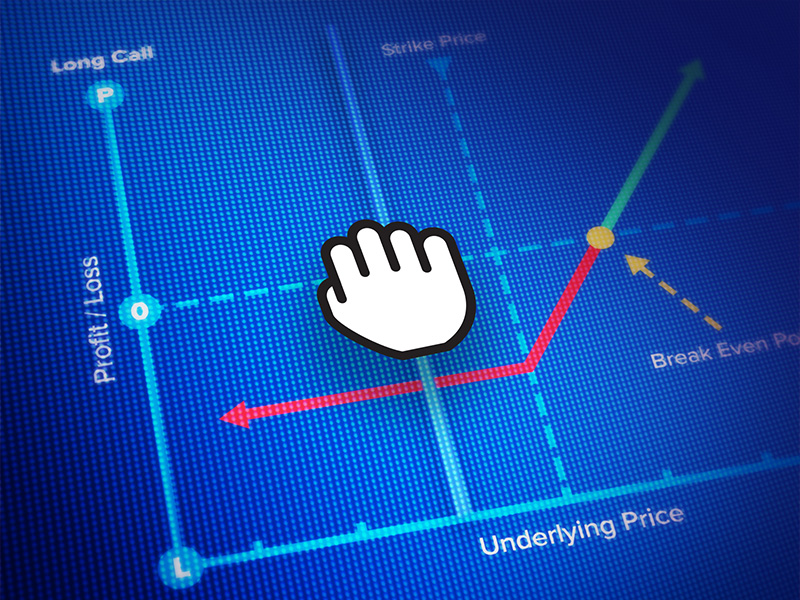The article “The Future of Backtesting: A Deep Dive into Walk Forward Analysis” was originally posted on PyQuant News.
In the competitive world of trading and investing, the line between success and failure is often very thin. Imagine having a tool that could predict the effectiveness of your trading strategies—backtesting is close to that. However, traditional backtesting methods have notable limitations. Enter walk forward analysis, a revolutionary approach that offers a more accurate and reliable way to evaluate trading strategies.
Understanding Walk Forward Analysis
Walk forward analysis is a sophisticated technique used to test and optimize trading strategies. Unlike traditional backtesting, which evaluates a strategy over a fixed historical period, walk forward analysis continuously updates and refines the strategy by moving through the data incrementally. This dynamic approach aims to simulate real-world trading conditions more accurately.
Traditional Backtesting vs. Walk Forward Analysis
Traditional backtesting involves running a trading strategy against historical data to see its past performance. While useful, this method has significant limitations. It can lead to overfitting, where a strategy performs well on historical data but fails in live trading. Walk forward analysis mitigates this issue by continuously adjusting the strategy parameters to new data, making it more adaptable to changing market conditions.
The Mechanics of Walk Forward Analysis
The process of walk forward analysis involves several key steps:
- Divide Historical Data into Segments: The entire dataset is split into multiple segments. Typically, the initial segment is used to optimize the trading strategy, while the subsequent segments are used for testing it.
- Optimization Phase: The strategy is optimized on the first segment of data. This step involves adjusting the parameters to achieve the best possible performance within this timeframe.
- Testing Phase: Once optimized, the strategy is tested on the next segment of data, which was not part of the optimization phase. This helps to verify whether the strategy performs well on unseen data.
- Walk Forward: The process is then repeated by moving forward in time. The training or optimization window is rolled forward by a set amount, and the next segment of data is used for testing.
- Performance Evaluation: The results from each testing phase are compiled to evaluate the overall performance of the strategy. Metrics such as profitability, drawdown, and risk-adjusted returns are typically considered.
Advantages of Walk Forward Analysis
Walk forward analysis offers several advantages over traditional backtesting methods:
- Realism: By continuously updating and testing the strategy on new data, walk forward analysis provides a more realistic simulation of live trading conditions.
- Robustness: This technique helps to identify strategies that are genuinely robust and not just overfitted to historical data. Overfitting is a common issue in traditional backtesting, where the strategy performs well on historical data but fails in real-world trading.
- Adaptability: Markets are dynamic and constantly changing. Walk forward analysis ensures that the trading strategy adapts to these changes over time, increasing its chances of long-term success.
- Risk Management: By evaluating the strategy across multiple segments of data, walk forward analysis offers better insights into its risk profile and potential vulnerabilities.
Implementing Walk Forward Analysis
Implementing walk forward analysis requires a methodical approach and a good understanding of both the trading strategy and the market being analyzed. Here are some key considerations:
Data Quality and Segmentation
High-quality, reliable historical data is the foundation of any backtesting process. Ensure that the dataset is free from errors and accurately reflects market conditions. When segmenting the data, consider the frequency of trading (e.g., daily, weekly) and the length of the optimization and testing windows. A common approach is to use a rolling window, where the optimization period is fixed, and the testing period moves forward in increments.
Optimization Techniques
Optimization involves adjusting the parameters of the trading strategy to achieve the best performance. Common optimization techniques include grid search, genetic algorithms, and machine learning methods. It is essential to avoid overfitting by not excessively fine-tuning the parameters to the historical data.
Performance Metrics
Evaluate the performance of the trading strategy using a comprehensive set of metrics. These may include:
- Profitability: The overall return generated by the strategy.
- Drawdown: The maximum loss from a peak to a trough during the testing period.
- Sharpe Ratio: A measure of risk-adjusted returns.
- Win Rate: The percentage of profitable trades.
- Consistency: The stability of returns over different segments of data.
Software and Tools
Several software platforms and tools are available to facilitate walk forward analysis. These range from specialized trading software to general-purpose programming languages like Python and R. Ensure that the chosen platform supports the required data handling, optimization, and testing capabilities.
Case Study: Applying Walk Forward Analysis
To illustrate the application of walk forward analysis, let’s consider a hypothetical trading strategy based on moving averages. The strategy involves going long when the short-term moving average crosses above the long-term moving average and going short when the opposite occurs.
Step-by-Step Walk Forward Analysis
- Data Preparation: Gather historical price data for the chosen market, such as the S&P 500 index, over a 10-year period. Divide the data into two-year segments.
- Optimization Phase: Optimize the moving average parameters (e.g., 50-day and 200-day) on the first two-year segment to achieve the best performance.
- Testing Phase: Apply the optimized strategy to the next two-year segment. Record the performance metrics.
- Walk Forward: Move the optimization window forward by one year and repeat the process. Continue this until the entire dataset has been analyzed.
- Performance Evaluation: Compile the results from each testing phase to evaluate the overall performance. Assess the strategy’s robustness, adaptability, and risk profile.
Resources for Further Learning
For those interested in learning more about walk forward analysis and enhancing their backtesting skills, several valuable resources are available:
- Books:
- Quantitative Trading Systems by Dr. Howard B. Bandy: This book offers a comprehensive guide to developing and testing trading systems, including a detailed section on walk forward analysis.
- Algorithmic Trading: Winning Strategies and Their Rationale by Ernie Chan: A practical guide to algorithmic trading, this book covers various backtesting techniques and includes a chapter on walk forward analysis.
- Online Courses:
- Algorithmic Trading and Finance Models with Python, R, and Stata Essential Training by Michael McDonald (LinkedIn Learning): This course covers a range of topics, including backtesting and walk forward analysis, using popular programming languages.
- Algorithmic Trading and Quantitative Analysis Using Python by LazyProgrammer Inc. (Udemy): A hands-on course that teaches the fundamentals of algorithmic trading and backtesting.
- Software and Tools:
- QuantConnect: An open-source algorithmic trading platform that supports walk forward analysis and offers extensive documentation and tutorials.
- MetaTrader 5: A popular trading platform that includes built-in walk forward optimization capabilities.
- Research Papers and Articles:
- Walk-Forward Analysis: A Powerful Methodology for Trading System Evaluation by Robert Pardo: An in-depth article that explores the principles and benefits of walk forward analysis.
- A Comprehensive Guide to Walk Forward Optimization by Michael Harris: A detailed guide that covers the practical aspects of implementing walk forward analysis.
Walk forward analysis represents a significant advancement in the field of backtesting, offering a more realistic and robust evaluation of trading strategies. By continuously optimizing and testing the strategy on new data, this technique helps to identify strategies that are genuinely effective and adaptable to changing market conditions. As with any analytical method, the key to success lies in meticulous preparation, careful execution, and continuous learning. By leveraging the resources available, traders and investors can enhance their backtesting skills and improve their chances of success in the competitive world of trading.
Disclosure: Interactive Brokers Third Party
Information posted on IBKR Campus that is provided by third-parties does NOT constitute a recommendation that you should contract for the services of that third party. Third-party participants who contribute to IBKR Campus are independent of Interactive Brokers and Interactive Brokers does not make any representations or warranties concerning the services offered, their past or future performance, or the accuracy of the information provided by the third party. Past performance is no guarantee of future results.
This material is from PyQuant News and is being posted with its permission. The views expressed in this material are solely those of the author and/or PyQuant News and Interactive Brokers is not endorsing or recommending any investment or trading discussed in the material. This material is not and should not be construed as an offer to buy or sell any security. It should not be construed as research or investment advice or a recommendation to buy, sell or hold any security or commodity. This material does not and is not intended to take into account the particular financial conditions, investment objectives or requirements of individual customers. Before acting on this material, you should consider whether it is suitable for your particular circumstances and, as necessary, seek professional advice.














Join The Conversation
For specific platform feedback and suggestions, please submit it directly to our team using these instructions.
If you have an account-specific question or concern, please reach out to Client Services.
We encourage you to look through our FAQs before posting. Your question may already be covered!